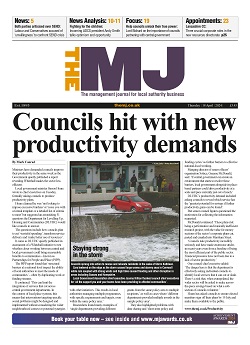Almost every aspect of our lives influences our health – our jobs, homes, access to education and whether we experience poverty or racism.
These factors – the wider determinants of health – are poorly understood and often entirely left out of public debate around improving health.
People think about health in highly individualistic ways, understanding people’s behaviours and access to health care to be the most important factors to their health, and this leaves very little room for the wider context- the building blocks of health.
To address health inequalities, we need to change the way that we communicate about the wider determinants of health to increase public understanding and build support for policy change to improve health.
The Health Foundation has been working with FrameWorks UK for the past four years, to examine how the public think about health. The research carried out by FrameWorks UK was published in March this year. Now we have used that evidence to create a guide for communicating about health and health inequalities. This is a practical step-by-step toolkit for those working and communicating in the field of public health.
Here are 5 top tips from our new toolkit
1. Show why it matters: lives are being cut short. We need to open our communications with inequalities in how long people can expect to live in the UK, and the fact that too many lives are being cut short.
2. Harness the power of explanation: Most people don’t understand how the world around us shapes our health. We can increase understanding by taking a ‘deep-dive’ explanation into one of the wider determinants of health (jobs or housing work well) and by using a ‘building blocks’ metaphor. The building blocks of health include access to secure housing, good jobs with fair pay, quality education, and much more.
3. Show change is possible: People can feel fatalistic about the possibility of change when it comes to health. We need to show change is possible by building solutions into our communications early and being explicit that we can make a difference.
4. Use certain arguments with caution: Part of telling a powerful story is knowing what not to say. The wrong message can actually decrease support for change, and the toolkit provides guidance on talking about the economic cost of the wider determinants of health, the NHS, and the COVID-19 pandemic.
5. Use data to strengthen your story, not tell it: Naked numbers can reinforce unhelpful ways of thinking, because people interpret them through their own existing beliefs. Help people make sense of facts and figures by putting them in context.
This toolkit sets out how we can frame our communications to tell a more powerful story about health that can inspire action and change. The recommendations apply whether you are speaking to a public, political, or expert audience – just shift the tone and emphasis to tailor the message.
Louise Marshall is senior public health fellow at The Health Foundation

